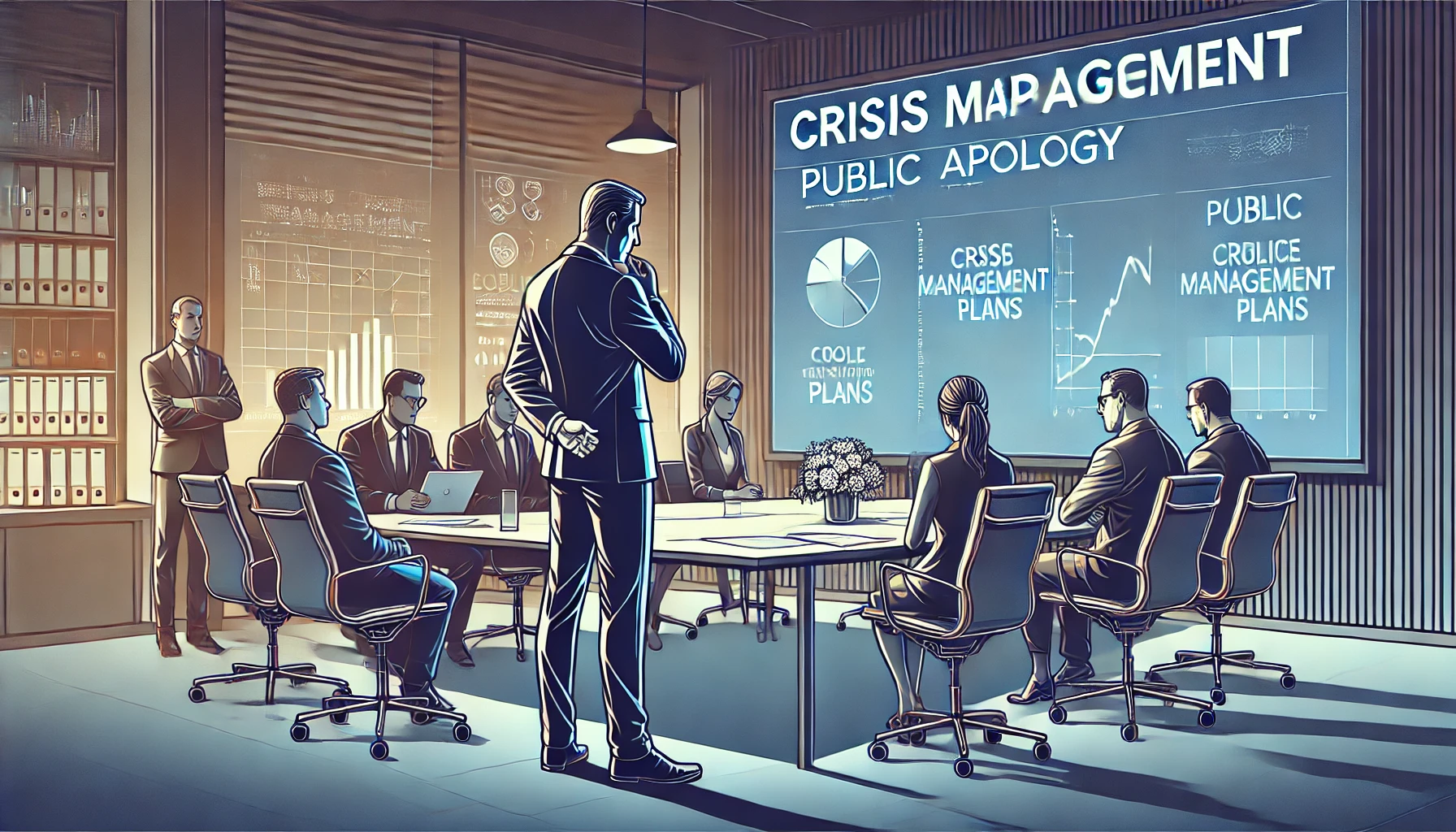In today’s fast-paced digital world, businesses are under constant scrutiny. Even small missteps can escalate into full-blown crises. How a company responds when things go wrong can either safeguard or severely damage its reputation. One of the most effective strategies for damage control is a transparent, well-crafted apology. The power of a proactive apology is immense—it helps prevent further fallout, rebuilds trust, and often restores a company’s image far more effectively than silence or defensiveness.
This guide offers businesses a step-by-step playbook for managing crises through sincere, effective apologies.
Mastering the Art of the Business Apology
Every business will face a crisis eventually—it’s not a matter of if, but when. Whether it’s a product defect, a PR nightmare, or a service disruption, your company’s response will either deepen the problem or serve as a catalyst for resolution. Apologies aren’t just about saying “sorry”; they’re about communicating accountability, empathy, and a commitment to making things right.
This Apology Playbook will show you how to leverage a well-crafted apology as a powerful crisis management tool. We’ll illustrate how transparent, genuine apologies can not only prevent further damage but often enhance your business’s credibility over the long term. From owning mistakes to offering a clear corrective plan, you’ll learn how to navigate even the most turbulent crises effectively.
Handled correctly, an apology is far more than damage control—it’s reputation restoration. By the end of this guide, you’ll see why a proactive apology isn’t just good PR; it’s essential for maintaining long-term customer loyalty and public trust.
Why Apologies Matter in Crisis Management
A sincere apology does much more than simply smooth things over. It demonstrates accountability, humanity, and a commitment to righting wrongs. Customers, employees, and stakeholders appreciate honesty—especially during a crisis. More importantly, timely apologies can prevent a situation from spiraling into a larger PR disaster.
An authentic apology can have several positive outcomes:
- Mitigating damage: Swiftly acknowledging mistakes allows a company to control the narrative and prevent further speculation.
- Restoring trust: A transparent apology signals that the business values its stakeholders’ concerns and prioritizes accountability.
- Demonstrating leadership: Owning up to mistakes reflects strong leadership and fosters a culture of accountability within the organization.
Step-by-Step Guide to Crafting an Effective Apology
- Acknowledge the Mistake (Take Full Ownership)
The first and most crucial step is to acknowledge the error. Whether it’s a faulty product, a service outage, or a tone-deaf marketing campaign, address the issue head-on. Don’t deflect blame or offer vague excuses. Customers value honesty, and owning up to the error is the first step in earning back trust.
Example: “We acknowledge that our recent product launch did not meet the standards our customers expect from us. This is entirely our responsibility, and we are committed to resolving it.” - Show Genuine Empathy
Apologies that feel robotic or insincere often make the situation worse. The second step is to show genuine empathy. Focus on the people affected—whether it’s your customers, employees, or the broader public. An effective apology must communicate an understanding of the impact your actions have had on others.
Example: “We understand that this issue has caused frustration and inconvenience, and we deeply regret any disruption it may have caused.” - Offer a Solution (How You Plan to Fix the Issue)
An apology without a clear plan of action is just words. To restore confidence, you must outline concrete steps your company is taking to fix the problem and ensure it doesn’t happen again.
Example: “In response, we are recalling the defective items and offering full refunds to affected customers. Additionally, we are implementing stricter quality control measures to prevent this issue from recurring.” - Be Timely
Timing is everything. The longer you wait to address a crisis, the more control you lose over the narrative. Apologizing promptly ensures your message reaches the public before misinformation spreads.
Example: “As soon as we became aware of the issue, we immediately halted production and began an internal investigation to determine the cause.” - Follow Up (Show Continued Commitment)
Apologizing once isn’t enough. Following up with updates and showing continued progress toward resolving the issue is crucial for restoring trust. Keep your audience informed to demonstrate that your company is serious about making things right.
Example: “We will continue to provide updates as we implement new procedures to address the issue and improve our products moving forward.”
The Role of Transparency in Apologies
Transparency is critical in any crisis. Being upfront about what went wrong and how you’re fixing it builds trust. A vague apology leaves customers feeling more confused and skeptical. But clear, detailed explanations humanize the company, showing that it’s learning from its mistakes and taking real steps to improve.
Case in Point:
When Starbucks faced backlash over a racial bias incident in 2018, the company responded quickly with a transparent, proactive approach. Starbucks acknowledged the issue, temporarily closed stores for racial bias training, and communicated their corrective measures to the public. This transparency helped stem the tide of negative PR and restore trust in the brand.
How Proactive Apologies Prevent Further Fallout
Taking swift, proactive action with an apology can prevent a small issue from snowballing into a full-blown crisis. When businesses delay or avoid issuing apologies, they leave room for speculation, mistrust, and negative PR. By addressing the problem early, you maintain control over the narrative and limit the spread of misinformation.
- Stemming public backlash: Quickly addressing an issue can quell outrage and prevent further escalation.
- Reframing the narrative: Apologizing early allows you to lead the conversation and prevent it from being controlled by outside critics.
- Reassuring stakeholders: Prompt responses reassure customers, investors, and employees that the company is managing the situation responsibly.
The Psychology of Apologies: Why Empathy Matters
An apology isn’t just about words—it’s about emotional connection. When customers feel hurt or betrayed, a well-crafted apology can rebuild that emotional bond. Apologies that acknowledge how the mistake made people feel—whether it caused frustration, disappointment, or distrust—will resonate more deeply and be more effective.
Research in behavioral psychology shows that people are more likely to forgive and retain positive impressions of businesses that apologize sincerely. That sincerity is conveyed not just through accountability, but also through empathy.
SEO Optimized Long-Tail Keywords and Their Importance
To ensure your content reaches the right audience, it’s crucial to optimize for SEO, particularly long-tail keywords. Customers are increasingly searching for answers using voice search and natural language queries. Relevant long-tail keywords for this topic include:
- How businesses can apologize during a crisis
- Steps to issue an effective apology in PR
- Best practices for business crisis management
- Apology strategies for reputation management
- Preventing PR fallout through proactive apologies
These keywords not only improve SEO but also reflect the real concerns of business owners and PR professionals searching for guidance online.
Timing Matters: Avoiding Delays in Crisis Response
A delayed apology can be disastrous. When businesses fail to respond quickly, they appear indifferent, fueling public mistrust. Even if you don’t have all the answers yet, a simple acknowledgment and commitment to transparency go a long way in retaining trust. The best strategy is to issue an initial response promptly and follow up with more details as they become available.
Conclusion: The Power of an Effective, Transparent Apology
In crisis management, an apology is more than just a statement—it’s a strategic tool that shapes public perception and preserves your business’s reputation. By owning the mistake, showing empathy, providing a clear solution, and responding swiftly, you can effectively manage crises and even strengthen your relationship with stakeholders.
Every apology presents an opportunity. When handled correctly, it can transform a potential PR disaster into a moment of growth, reaffirming customer loyalty and reinforcing trust in your brand.


